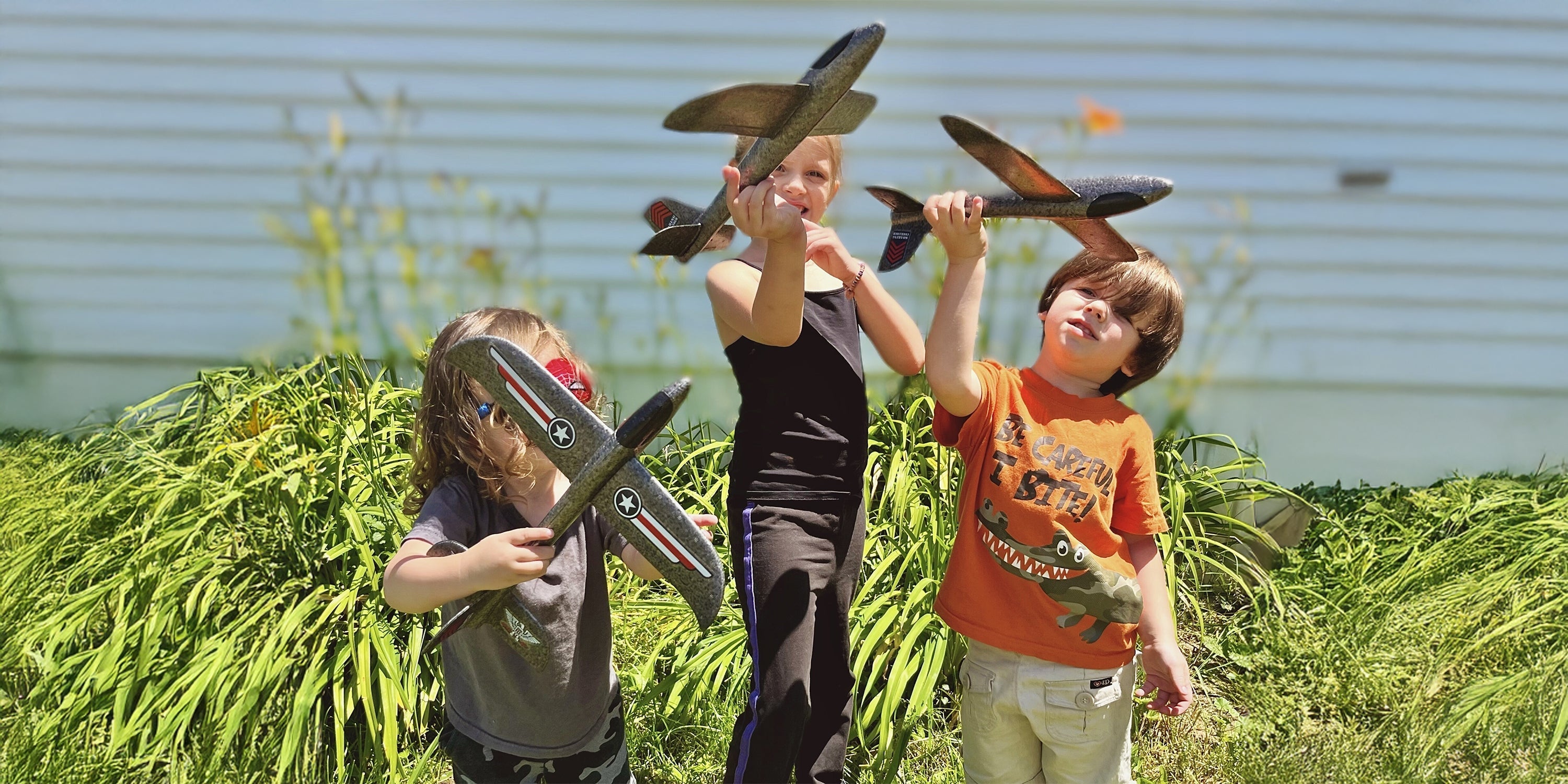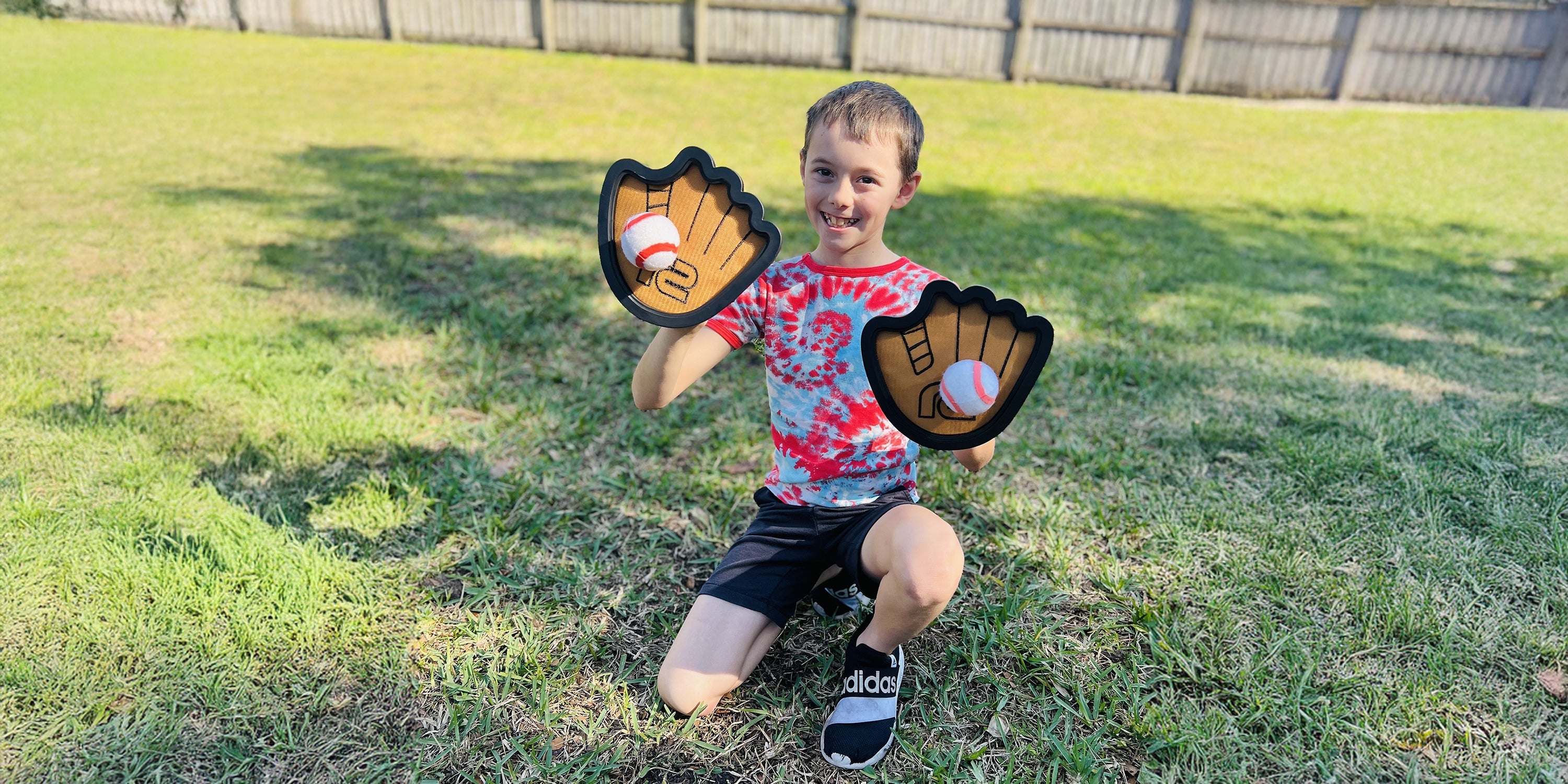Kids are spending more time than ever on screens. Screens aren’t going away, and we’re not here to encourage you to eliminate screen time entirely.
Here’s the problem: Too much screen time and low-quality screen time can negatively affect your child’s health, behavior, and development. In this article, we offer a number of suggestions for screen-free activities for kids of all ages; activities that will keep them active and connected with their friends and family:
Why Screen-Free Activities Are Important For Kids
How Much Screen Time Is Too Much?
Too much screen time is somewhat subjective. According to the American Academy of Child & Adolescent Psychiatry, in the United States, children between the ages of 8 and 18 spend 7 ½ hours a day using screens. Its recommendations are interesting:
-
Children under the age of 18 months should only be allowed to use screens for video chatting with adults.
-
Children between 18 and 24 months should be limited to watching educational programs with caregivers.
-
Children 2-5 should be limited to 1 hour of non-educational screen time on weekdays, and 3 hours on weekend days.
There is no guidance on screen time for children 6 and over; instead, it recommends limiting activities that include screens and encouraging healthy habits, including:
-
No screens during meals and outings
-
Using parental controls
-
Removing screens from bedrooms 30-60 minutes before bedtime
-
Not using screens to pacify children during outbursts and tantrums
Quality of screen time is important; when it connects kids with friends and family, it can be extremely beneficial, but when kids are mindlessly using gamified apps, it can lead to problems.
One recommendation? Don’t actively limit screen time; instead, focus on creating an environment full of engaging, screen-free activities.
What Happens When Kids Spend Too Much Time On Screens?
Too much screen time is linked to a host of health problems, behavioral problems, and academic problems. According to the Mayo Clinic, too much screen time is linked to:
-
Obesity
-
Irregular sleep
-
Emotional, social, and attention problems
-
Worse performance on tests
-
Less time for active, creative play
A widely cited study published in 2023 also found that excessive screen time can negatively affect:
-
Executive functioning
-
Sensorimotor development
-
Cognitive abilities
-
Language development
This doesn’t mean that screen time has no place in a child’s development; screens are an essential part of the modern world (after all, here you are, reading this article on a screen). Too much screen time is the problem; screen-free play is one solution.
Signs Your Child Needs A Screen Break
Screens can be addictive. There are signs that your kid may be too invested in their screen; if you see these signs, it might mean that you need to intervene to reduce your child’s screen time. Ideally, this should happen organically through the introduction of screen-free activities and toys into your child’s life. At times, you may need to take more active measures to limit screen time.
Here are some of the most common signs your child needs a break from their screens:
-
Your child isn’t getting enough physical activity.
-
Your child isn’t sleeping enough.
-
Your child is waking up at night to use screens.
-
Your child’s test scores and grades are declining.
-
You notice your child getting headaches or struggling with eye strain.
-
Asking your child to stop using their screen leads to arguments, tantrums, or other bad behavior.
-
Your child uses screens when they have been asked not to (texting during family dinner, sleeping with their phones, or other habits you’ve discouraged).
Screen-Free Games For On-The-Go Families
Staying on the go is a great way to discourage screen time; if your kids are enrolled in sports, cultural activities, or other teams and events, they’ll simply have less time for screens. Below are a few ways to keep your kids busy and screen-free while you’re on the go:
What To Pack In A Screen-Free Travel Playbag
Depending on your child’s age, you should consider packing:
-
Fidget toys
-
Coloring books
-
Reading material
-
Activity books
-
Active toys that can be used at rest stops for long road trips
We have a number of outdoor toys for kids that are perfect for rest stops on road trips—and for backyard play!
Turn Walks Into Races With Speed Games
Kids love getting physically active, and most are always game for a bit of competition. See if they can run to a tree faster than you can hop there on one foot (if they're young), or race them in a straight head-to-head competition (if they’re old enough). If you have two or more kids, they can compete against each other!
Play "Guess The Number" In The Car
Guess the number is a simple game with a number of variations that can help your kids learn math. Come up with a number, as small or as large as you want, depending on your kid’s age. Your child will then guess the number that you have in your head. You can then tell them if the number you’re thinking of is higher or lower.
Want to add complexity? Get your child to guess the number, then turn it into a game of twenty questions. They can ask if the number is higher or lower, or instead, they could ask if the number is an even number, or divisible by 5, or prime!
Go Number Hunting On Errands Or Nature Walks
Number hunting is another game with almost endless variations that you can play while you’re out and about. On a number hunt, you and your child decide on a number that your child must find as you complete your errands or nature walk. They can:
-
Find the number written as a numeral (e.g. the number “4” on a license plate or the number “5” on a speed limit sign)
-
Spot the number written out in letters (e.g. Two Can Dine on a coupon)
-
Point out groups that are made up of that number (e.g. six birds in a flock)
Screen-Free Activities When You're Busy At Home
Choose Toys Based On Their Favorite Obsessions
Does your kid love planes? Get one of our gliders; they can play with them outdoors all day long. Do they love fantasy? Consider toy castles, princes, and princesses. Are they interested in food and cooking? You can get smaller kids' play kitchens and older kids' toy ovens.
Talk to your child about what they love, and get them toys to match. Their obsessions may change over time, but that’s healthy; it means they’re exploring what they’re passionate about.
Play Superhero-Themed Multiplayer Games
Most kids love to imagine themselves as heroes; you can help. Pick your kids up and help them soar like Superman. Set up little mysteries for your kids to solve so they can feel like Batman. You can even go wild; get a soft boomerang and help your kid invent their own boomerang-themed superhero!
Create A Cozy Play Corner With Fidget Toys Or Books
Sometimes, kids need to relax. Create a cozy corner with blankets, stuffed animals, pillows, fidget toys, books, and adjustable lighting. Corners like these give kids a chance to unwind without using their phones.
How To Reset After Too Much Screen Time
Encourage Jumping And Movement-Based Games
Kids who spend too much time on their phones might feel a bit hyperactive; they have too much energy that hasn’t been spent. Play hide-and-seek, tag, and other movement-based games with little ones. As your kids get older, sports like soccer, basketball, and catch can be just the thing to get the jitters out; we have all kinds of soft sports toys you can use to help your kids get active.
Play “Guess The Object” With A Pool Or Beach Toy Twist
There are all kinds of guessing games you can play with pool toys and beach toys. Guessing games that rely on senses other than sight are a great pick; can your child identify a plastic shovel by feel when it’s buried in sand, or the sound of one of our Soft Stone Skippers bouncing across the water? These games help kids tie their senses together; they’re great for little ones.
Plan An Indoor Or Backyard Treasure Hunt
Scavenger hunts are a classic for a reason. Prepare a list, watch your kids get creative, and give yourself a bit of time to relax as they check off items. We recommend giving out small prizes when the hunt is complete; a treasure hunt needs treasure, after all!
Screen-Free Activities For Kids By Age (3-11 Years Old)
Ages 3-5: Active Play And Simple Outdoor Fun
For young kids, activities can be as simple as playing hide-and-seek, going on walks together, and the simple number games we talked about earlier. Soft toys like our stringy balls and soft flyer discs can encourage outdoor play and physical coordination, too!
Ages 6-8: Energy-Burning And Social Play
From 6-8, kids are starting to make their own friends; they’re also extremely energetic and a little more coordinated. Playing tag, catch, and other physical games can help them burn energy and encourage socializing; our soft boomerangs and airplane gliders can encourage active, imaginative play.
Ages 9-11: Team Play And Skill-Building Activities
Kids between 9 and 11 are old enough to understand their passions, develop their skills, and engage in strategic team play. Our lacrosse sets, hockey water games, and underwater pool balls can all help kids develop greater coordination and tactical thinking while encouraging team play.
Chore Time Without Complaints (And Without Screens)
Use A Reward Chart To Motivate Screen-Free Tasks
Screens are designed to give dopamine hits; reward charts can help motivate your kids to stay screen-free. Ideally, the rewards won’t be screen time; something as simple as stickers can motivate kids to engage in fun, screen-free activities. Consider putting a mark on the chart for every hour your child spends screen-free, or for every screen-free activity they complete.
When your child gets enough marks, give them a reward! You can even help them learn about saving and decision-making by trading marks for items or activities; the more marks they collect, the bigger the prize!
Make Chores Fun With Music And Movement
Cleaning and chores can be fun! Put on music and have a dance party while your kid cleans their room, brushes their teeth, or does another chore. You can also sync up your chore with your child’s, so they know that everyone has to do chores—and that everyone can have fun doing them!
How To Make Screen-Free Time Fun (And Stick To It)
Reward Systems And Positive Reinforcement
We’ve already discussed using a reward chart, but that’s not the only way you can reward your child for screen-free time. Simply praising them for not using their screen is a great way to keep them off their screens. Another important tool? Stay off your screens; you should be enjoying screen-free time, too. You’re in it together!
Creating A Weekly Screen-Free Schedule
Keeping your kids busy is the best way to keep them off their screens. Plan walks, playtime, and other activities. Enroll your kids in group activities, teach them to play an instrument, and go to the beach; the more fun they have planned all week long, the less time they’ll have for screens!
Getting Siblings Or Friends Involved
Going screen-free is easier when friends and family members are involved. Younger kids look up to their parents and older siblings; plan screen-free activities together, from taking a bike ride to playing jump rope. Schedule play dates for your kids with their friends, and don’t be afraid to host; it’s the best way to keep an eye on your kids’ screen time when they’re playing with friends.
More Parenting Resources On Screen-Free Living
Managing Tantrums When It’s Time To Power Off
Having trouble with tantrums and screen time? We love this guide from Healthy Children. It recommends you:
-
Lay the groundwork with your kids before screen time.
-
Work together on creating a fair screen-time plan.
-
Follow healthy screen-time habits yourself.
-
Avoid lecturing your child during their tantrum.
-
Take advantage of parental controls and remind your child of the controls before they start their screen time.
-
Give them space.
-
Help reconnect them to the physical world.
Bedtime Routines That Don’t Involve A Tablet
Screens and bedtime do not mix. For younger kids, we recommend bedtime stories as a part of a bedtime routine. Older children can be encouraged to read or even to practice journaling. Spend quiet, quality time together, and slow down before bed.
With your help, your child can reduce their screen time and live a more active, more connected, and healthier life. Looking for screen-free birthday gifts for your kids? We have fun, safe, kid-approved, screen-free toys that we think you and your kids will love.










